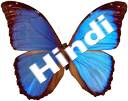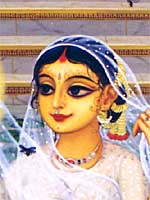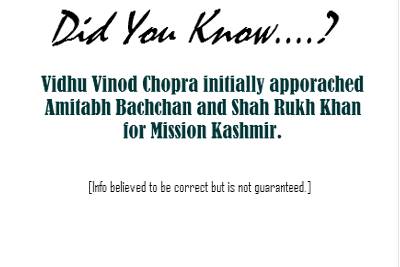



 Here are some common customs found in Bollywood (and Hindi society in general). Please be sure to view some of the Sources listed for further reading; they were all very helpful and have a TON more info. Enjoy!
.
Here are some common customs found in Bollywood (and Hindi society in general). Please be sure to view some of the Sources listed for further reading; they were all very helpful and have a TON more info. Enjoy!
.
"We're not all lucky enough to know Hindi. Though DVDs have improved matters, often it is still difficult to find Bollywood films with subtitles (and when one does, these subtitles tend to be illegible or inadequate). Also, even for students of Hindi, Bollywood films can pose a considerable challenge." ~ Courtesy BollyWHAT.Com
 Ah, the kiss! The kiss is not specifically forbidden in film – but certainly frowned upon not only by the censors (The censor board is notoriously unpredictable) but also by much of the movie going public; no one wants to risk getting a rating that would scare away families. Bollywood plays
to a diverse range of people, from the illiterate and provincial
to the worldly and urban. Ideas of morality differ widely
from group to group. Also,
actresses don't want to lose their conservative fans, nor
do they want to endure salacious flak from journalists. So
they're not too keen on kissing on-screen, and many proudly
trumpet their refusal to do it.This non-kissing taboo is strictly limited to the lip to lip variety – the kissing of the neck, shoulders, stomach, ears, nose and other sundry parts of the body is negotiable and often plentiful in Bollywood films. What is often amusing is how the films tease the audience with either a near lip kiss – but at the last instant the actress will demurely turn her face away – or occasionally the couple will seemingly kiss – but an object will suddenly block the viewer’s line of sight leaving the lovers a private moment. For a viewer like me (who is used to the shock-value-only cinema of the USA) it can be pretty frustrating...but I do respect the industry for sticking to their guns. [Top 10 Bollywood Kisses & Kissing in "Raja Hindustani"]
Ah, the kiss! The kiss is not specifically forbidden in film – but certainly frowned upon not only by the censors (The censor board is notoriously unpredictable) but also by much of the movie going public; no one wants to risk getting a rating that would scare away families. Bollywood plays
to a diverse range of people, from the illiterate and provincial
to the worldly and urban. Ideas of morality differ widely
from group to group. Also,
actresses don't want to lose their conservative fans, nor
do they want to endure salacious flak from journalists. So
they're not too keen on kissing on-screen, and many proudly
trumpet their refusal to do it.This non-kissing taboo is strictly limited to the lip to lip variety – the kissing of the neck, shoulders, stomach, ears, nose and other sundry parts of the body is negotiable and often plentiful in Bollywood films. What is often amusing is how the films tease the audience with either a near lip kiss – but at the last instant the actress will demurely turn her face away – or occasionally the couple will seemingly kiss – but an object will suddenly block the viewer’s line of sight leaving the lovers a private moment. For a viewer like me (who is used to the shock-value-only cinema of the USA) it can be pretty frustrating...but I do respect the industry for sticking to their guns. [Top 10 Bollywood Kisses & Kissing in "Raja Hindustani"] Touching
someone's feet is a sign of respect usually accorded solely
to elders, as in this still from Mann, when Manisha meets
Aamir's grandmother. Why is this considered respectful, you
ask? Well, Hindu theology, and Indian culture in general,
holds the feet to be the most polluted part of the body (the
head, farthest away from the ground and least likely to come
into contact with it, is the most pure). This is why you take
off your shoes upon entering a temple (your shoes have been
in constant contact with the ground), and also why you should
never point the soles of your feet at someone (very rude!).
Therefore making a point to touch someone's feet is a sign
of your immense respect for them: you honor them so greatly
that touching even their feet is a privilege.
Touching
someone's feet is a sign of respect usually accorded solely
to elders, as in this still from Mann, when Manisha meets
Aamir's grandmother. Why is this considered respectful, you
ask? Well, Hindu theology, and Indian culture in general,
holds the feet to be the most polluted part of the body (the
head, farthest away from the ground and least likely to come
into contact with it, is the most pure). This is why you take
off your shoes upon entering a temple (your shoes have been
in constant contact with the ground), and also why you should
never point the soles of your feet at someone (very rude!).
Therefore making a point to touch someone's feet is a sign
of your immense respect for them: you honor them so greatly
that touching even their feet is a privilege.  Namaskar or Namaste is the most popular form of greeting in India. The two palms are placed together in front of the chest and the head bows whilst saying the word "namaste".
Hindi philisophy states that the real meeting between people is the meeting of their minds. Thus Namaste means "may our minds meet," indicated by the folded palms placed before the chest. The bowing down of the head is a gracious form of extending friendship in love and humility. The spiritual meaning is even deeper. The life force (the divinity, the Self or the Lord) is the same in everyone & in recognising this oneness with the meeting of the palms, believers salute the Divinity in others.
Namaskar or Namaste is the most popular form of greeting in India. The two palms are placed together in front of the chest and the head bows whilst saying the word "namaste".
Hindi philisophy states that the real meeting between people is the meeting of their minds. Thus Namaste means "may our minds meet," indicated by the folded palms placed before the chest. The bowing down of the head is a gracious form of extending friendship in love and humility. The spiritual meaning is even deeper. The life force (the divinity, the Self or the Lord) is the same in everyone & in recognising this oneness with the meeting of the palms, believers salute the Divinity in others.
 Bindi is derived from bindu, the Sanskrit word for dot. It is usually a red dot made with vermilion powder which is worn by women between their eyebrows on their forehead. Considered a symbol of Goddess Parvati, a bindi signifies female energy and is believed to protect women and their husbands. Traditionally a symbol of marriage, it has also become decorative and is worn today by unmarried girls and women as well. No longer restricted in colour or shape, bindis are seen in many bright colours and in different shapes and designs. They are also made of coloured felt and embellished with coloured glass or glitter.Tilak is a ritual mark on the forehead, applied on the spot between the brows which is considered the seat of latent wisdom and mental concentration, a point where the spiritual eye opens, and is very important for worship. Putting of the coloured mark symbolizes the quest for the 'opening ' of the third eye & all thoughts and actions are said to be governed by this spot. All rites and ceremonies begin with a tilak topped with a few grains of rice placed on this spot with the index finger or thumb. The same custom is followed while welcoming or bidding farewell to guests or relations.
The devotees of Siva apply sacred ashes (Bhasma) on the
forehead, the devotees of Vishnu apply sandalwood paste
(Chandan), and the worshippers of Devi or Shakti apply kumkum (a mixture of turmeric, alum, iodine, camphor). [For additional religious info pertaining to facial marks, click here & here]
When women wear vermilion in the parting of her hair it, unlike the bindi,
has one clear meaning -- she is married, and her husband is
alive. If she were to be widowed, she would cease to wear
vermilion in her part. Legend has it that this ceremony began
due to a slew of brides being kidnapped at the wedding ceremony.
The groom would fight for his bride, and if he slayed the
would-be abductor, he would smear his bride's part with the
fallen man's blood. (It wasn't all the man's job, though:
according to tradition, brides of the Kshatriya class should
carry a knife at the wedding to help defend their virtue.)
Hindi filmmakers love this: watch a few action movies and
you're sure to see the hero smearing the villain's blood into
his beloved's hair.
Bindi is derived from bindu, the Sanskrit word for dot. It is usually a red dot made with vermilion powder which is worn by women between their eyebrows on their forehead. Considered a symbol of Goddess Parvati, a bindi signifies female energy and is believed to protect women and their husbands. Traditionally a symbol of marriage, it has also become decorative and is worn today by unmarried girls and women as well. No longer restricted in colour or shape, bindis are seen in many bright colours and in different shapes and designs. They are also made of coloured felt and embellished with coloured glass or glitter.Tilak is a ritual mark on the forehead, applied on the spot between the brows which is considered the seat of latent wisdom and mental concentration, a point where the spiritual eye opens, and is very important for worship. Putting of the coloured mark symbolizes the quest for the 'opening ' of the third eye & all thoughts and actions are said to be governed by this spot. All rites and ceremonies begin with a tilak topped with a few grains of rice placed on this spot with the index finger or thumb. The same custom is followed while welcoming or bidding farewell to guests or relations.
The devotees of Siva apply sacred ashes (Bhasma) on the
forehead, the devotees of Vishnu apply sandalwood paste
(Chandan), and the worshippers of Devi or Shakti apply kumkum (a mixture of turmeric, alum, iodine, camphor). [For additional religious info pertaining to facial marks, click here & here]
When women wear vermilion in the parting of her hair it, unlike the bindi,
has one clear meaning -- she is married, and her husband is
alive. If she were to be widowed, she would cease to wear
vermilion in her part. Legend has it that this ceremony began
due to a slew of brides being kidnapped at the wedding ceremony.
The groom would fight for his bride, and if he slayed the
would-be abductor, he would smear his bride's part with the
fallen man's blood. (It wasn't all the man's job, though:
according to tradition, brides of the Kshatriya class should
carry a knife at the wedding to help defend their virtue.)
Hindi filmmakers love this: watch a few action movies and
you're sure to see the hero smearing the villain's blood into
his beloved's hair.
 Flower garlands are generally offered as a mark of respect and honour. They are offered to welcome the visitors or in honour to the Gods and Goddesses. The garlands are generally made with white jasmine and orange marigold flowers. They are weaved in thread tied in the end with a help of a knot.
Flower garlands are generally offered as a mark of respect and honour. They are offered to welcome the visitors or in honour to the Gods and Goddesses. The garlands are generally made with white jasmine and orange marigold flowers. They are weaved in thread tied in the end with a help of a knot. In
this still from Jaanwar, Akshay and Karisma, who seconds before
almost kissed, are being upbraided by the wagging thumbs of
fellow wedding guests. Making a fist and extending your thumb,
as in the Western "thumbs-up!", then wagging it
back and forth, is used as a "shame on you" gesture;
also, occasionally, as a "nah nah" -- equivalent
to the old "thumbing your nose" at someone, though
that particular gesture fell out of fashion in the West a
few centuries back.
In
this still from Jaanwar, Akshay and Karisma, who seconds before
almost kissed, are being upbraided by the wagging thumbs of
fellow wedding guests. Making a fist and extending your thumb,
as in the Western "thumbs-up!", then wagging it
back and forth, is used as a "shame on you" gesture;
also, occasionally, as a "nah nah" -- equivalent
to the old "thumbing your nose" at someone, though
that particular gesture fell out of fashion in the West a
few centuries back. A ritual called Arati. Usually
this occurs in two different contexts in films: honoring/greeting (birthdays, weddings and general guests) & when worshipping God.
For performing Arati, five small lamps (niranjanas) are filled with clarified butter (ghee) or oil and arranged in a small tray made of metal. A wick is made out of cotton wool and placed in the lamps. A conchshell filled with water, auspicious leaves or flowers, incense or lighted camphor are also placed in the tray. The lamps are lit and the tray is rotated in a circular motion in front of the deity or the person to be welcomed. The purpose of performing arati is to ward off evil effects and the malefic influence of the ‘evil eye’. The tray is waved before human beings as a way of acknowledging
the sacred within them; since guests are considered to be
sacred, greeting them this way acknowledges their divine nature
and conveys what an honor it is for them to visit.
A ritual called Arati. Usually
this occurs in two different contexts in films: honoring/greeting (birthdays, weddings and general guests) & when worshipping God.
For performing Arati, five small lamps (niranjanas) are filled with clarified butter (ghee) or oil and arranged in a small tray made of metal. A wick is made out of cotton wool and placed in the lamps. A conchshell filled with water, auspicious leaves or flowers, incense or lighted camphor are also placed in the tray. The lamps are lit and the tray is rotated in a circular motion in front of the deity or the person to be welcomed. The purpose of performing arati is to ward off evil effects and the malefic influence of the ‘evil eye’. The tray is waved before human beings as a way of acknowledging
the sacred within them; since guests are considered to be
sacred, greeting them this way acknowledges their divine nature
and conveys what an honor it is for them to visit.  It
means you have to go to the bathroom...or, in the case of
the still at left from Dilwale Dulhaniya Le Jayenge, that
you just have. This explains Kajol's scandalized expression:
she's just asked Shahrukh's character what took him so long
in that church they'd been visiting. His wordless response
prompts her to shriek, "In the CHURCH?!?"
It
means you have to go to the bathroom...or, in the case of
the still at left from Dilwale Dulhaniya Le Jayenge, that
you just have. This explains Kajol's scandalized expression:
she's just asked Shahrukh's character what took him so long
in that church they'd been visiting. His wordless response
prompts her to shriek, "In the CHURCH?!?"


